Thousands of metres beneath the surface of the Earth in a near-endless void,carnivorous ping pong balls are on the hunt.
No,this isn’t the plot of a cheesy 1980s midnight movie – this ‘death ball sponge’ is one of 30 deep-sea creatures discovered by a recent expedition.
Living in one of the most remote regions of the planet is the Chondrocladia sp. nov,which is covered in tiny hooks to trap prey.
Chondrocladia sp. nov were found 3,601 metres into the Trench North,just east of Montagu Island,1,200 miles south-east of the Falkland Islands.
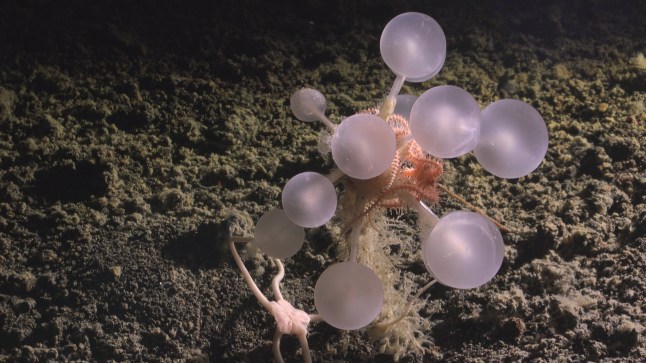
Chondrocladia sp. nov is a type of sea sponge – yes,a horror film version of SpongeBob SquarePants (Picture: The Nippon Foundation-Nekton Ocean Census/Schmidt Ocean Institute)

The above is possibly a new species of sea pen – an animal,not to be used to write birthday cards with (Picture: The Nippon Foundation-Nekton Ocean Census/Schmidt Ocean Institute)

This shimmery ‘Elvis worm’ is another denizen of the deep (Picture: The Nippon Foundation-Nekton Ocean Census/Schmidt Ocean Institute)
On the menu are copepods,teeny-tiny shrimplike crustaceans which are a common source of protein for marine life.
Dr Michelle Taylor,a head of science at Ocean Census,a nonprofit dedicated to the global discovery of ocean life that led the expedition,compared the critter to ‘ping pong balls’.
‘We think the balls extend the sponge’s surface area so there is a greater chance of snatching prey that inadvertently brushes past them,’ she told Metro.
‘The sponge is covered in micro-hooks,like Velcro,that catch prey. These carnivorous sponges then slowly absorb the prey… not a nice way to go.’
This is a far cry from your typical sea sponge,which lack muscles,nervous systems and even internal organs and feed on tiny particles.
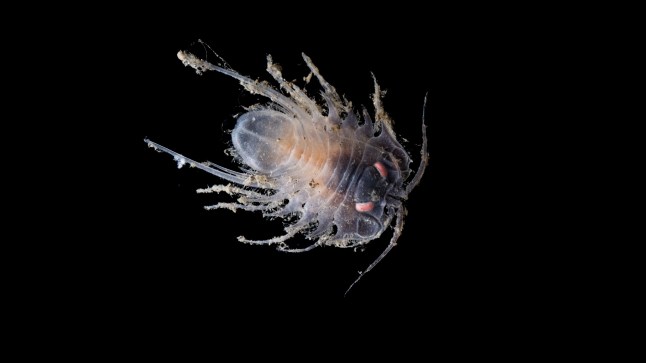
Experts are still reviewing the samples,such as this new isopod 3,533 metres deep (Picture: The Nippon Foundation-Nekton Ocean Census/Schmidt Ocean Institute)
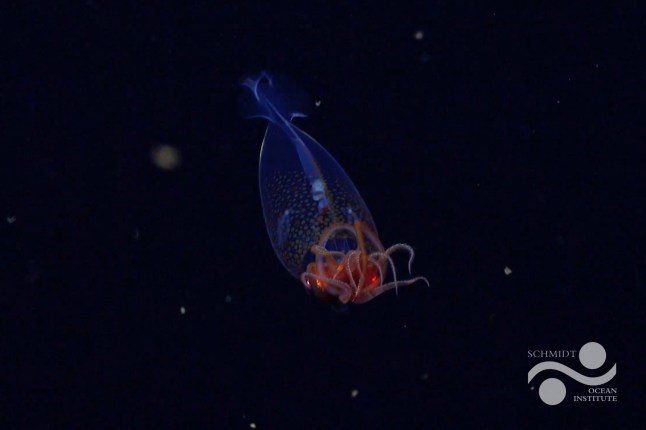
Some species adapt to life in the darkness by becoming bioluminescent (Picture: ROV SuBastian / Schmidt Ocean Institute)
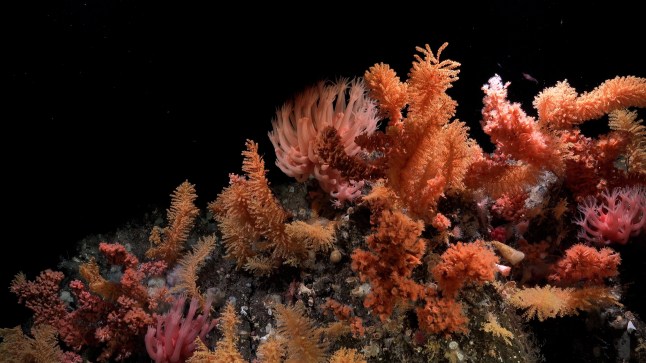 Fields of coral stretched across the trench at about 700 metres deep (Picture: The Nippon Foundation-Nekton Ocean Census/Schmidt Ocean Institute)
Fields of coral stretched across the trench at about 700 metres deep (Picture: The Nippon Foundation-Nekton Ocean Census/Schmidt Ocean Institute)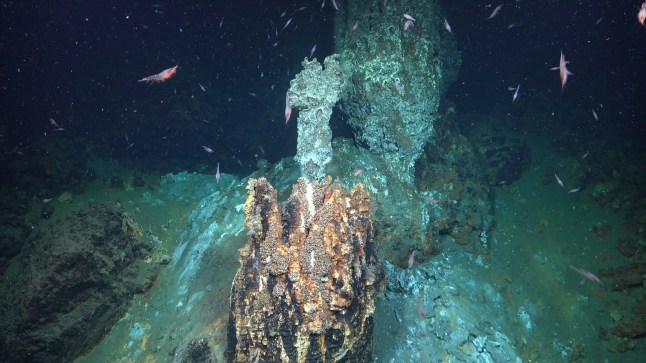 The oceans’ deepest trenches are among the harshest places on the planet (Picture: The Nippon Foundation-Nekton Ocean Census/Schmidt Ocean Institute)
The oceans’ deepest trenches are among the harshest places on the planet (Picture: The Nippon Foundation-Nekton Ocean Census/Schmidt Ocean Institute)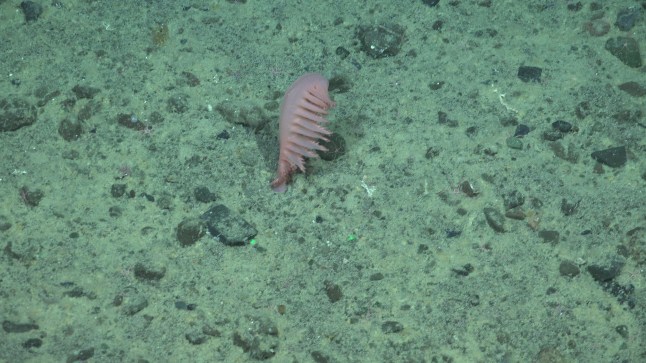 This sea pen was spotted 805 metres deep (Picture: The Nippon Foundation-Nekton Ocean Census/Schmidt Ocean Institute)Rare gastropods and bivalves were spotted lurking inside volcanic and hydrothermal-influenced habitats,where crushing pressure and high temperatures are the norm.Ocean Census was founded by the Nippon Foundation,a Japanese philanthropic organisation,and the British ocean exploration foundation Nekton. They have one goal – find 100,000 new marine species in the next decade.There’s a long way to go. More than two million species are estimated to live in the oceans,but only 10% of ocean life is known and just 27% has been mapped.Expeditions surveyed the volcanic calderas,the South Sandwich Trench and seafloor habitats around Montagu and Saunders Islands in February and March.Teams used a remotely operated underwater vehicle called SuBastian to trawl the ocean depths at 4,500 metres,nearly as tall as the Alps.
This sea pen was spotted 805 metres deep (Picture: The Nippon Foundation-Nekton Ocean Census/Schmidt Ocean Institute)Rare gastropods and bivalves were spotted lurking inside volcanic and hydrothermal-influenced habitats,where crushing pressure and high temperatures are the norm.Ocean Census was founded by the Nippon Foundation,a Japanese philanthropic organisation,and the British ocean exploration foundation Nekton. They have one goal – find 100,000 new marine species in the next decade.There’s a long way to go. More than two million species are estimated to live in the oceans,but only 10% of ocean life is known and just 27% has been mapped.Expeditions surveyed the volcanic calderas,the South Sandwich Trench and seafloor habitats around Montagu and Saunders Islands in February and March.Teams used a remotely operated underwater vehicle called SuBastian to trawl the ocean depths at 4,500 metres,nearly as tall as the Alps.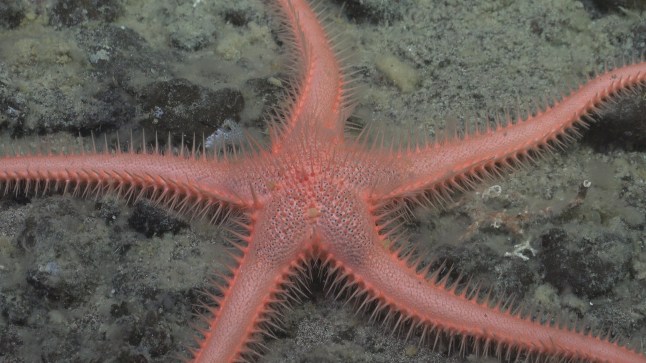 One of the thousands of samples collected was a new type of sea star,107 metres in the dive site (Picture: The Nippon Foundation-Nekton Ocean Census/Schmidt Ocean Institute)
One of the thousands of samples collected was a new type of sea star,107 metres in the dive site (Picture: The Nippon Foundation-Nekton Ocean Census/Schmidt Ocean Institute) As humans can barely survive 400ft in the deep sea,a special probe was sent down (Picture: The Nippon Foundation-Nekton Ocean Census/Schmidt Ocean Institute)Going to the vastly under-sampled region was a no-brainer,said Oliver Steeds,the director of Ocean Census.‘Where the Southern Ocean meets the South Atlantic,currents mixing with active seabed volcanism,life in these remote depths is extraordinary and largely undiscovered,’ he told Metro.‘We hope the discoveries will help support the South Georgia and South Sandwich Island Government’s continued efforts to conserve and protect the UK’s extraordinary wealth of biodiversity.’The expedition collected 2,000 specimens across 14 animal groups. To discover so many is ‘fantastic’,Professor Tim Smyth of the Plymouth Marine Laboratory told Metro.Marine ecosystems carry out vital functions that support life on the surface,such as creating food or storing planet-warming gases,he said. It’s why the charity is developing the largest study of vulnerable deep-sea habitats.‘Through new technologies,including the use of AI to identify species,we are steadily gaining a far greater understanding of the deep ocean than ever before,’ Professor Smyth added.
As humans can barely survive 400ft in the deep sea,a special probe was sent down (Picture: The Nippon Foundation-Nekton Ocean Census/Schmidt Ocean Institute)Going to the vastly under-sampled region was a no-brainer,said Oliver Steeds,the director of Ocean Census.‘Where the Southern Ocean meets the South Atlantic,currents mixing with active seabed volcanism,life in these remote depths is extraordinary and largely undiscovered,’ he told Metro.‘We hope the discoveries will help support the South Georgia and South Sandwich Island Government’s continued efforts to conserve and protect the UK’s extraordinary wealth of biodiversity.’The expedition collected 2,000 specimens across 14 animal groups. To discover so many is ‘fantastic’,Professor Tim Smyth of the Plymouth Marine Laboratory told Metro.Marine ecosystems carry out vital functions that support life on the surface,such as creating food or storing planet-warming gases,he said. It’s why the charity is developing the largest study of vulnerable deep-sea habitats.‘Through new technologies,including the use of AI to identify species,we are steadily gaining a far greater understanding of the deep ocean than ever before,’ Professor Smyth added.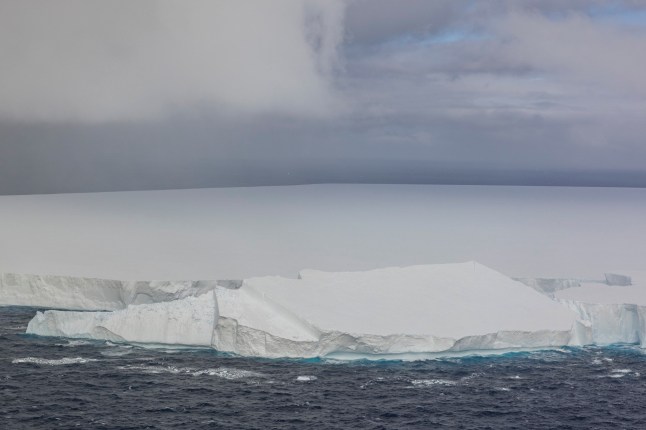 The South Atlantic Ocean hides many aquatic mysteries (Picture: Getty Images Europe)But for Dr Nicolai Roterman,of the University of Portsmouth,who was not involved in the expedition,we may have to explore the deep while we can.‘Deep-sea expeditions telling us more about the diversity of life are vitally important at a time when there is a strong push to exploit mineral resources in the deep sea and trawl ever deeper for fish,’ the deep-sea ecologist and senior lecturer in marine biology told Metro‘We may end up losing species to habitat destruction before we have a chance to study them (akin to cutting down virgin,unexplored rainforests) with the loss of knowledge that feeds into other scientific research.’
The South Atlantic Ocean hides many aquatic mysteries (Picture: Getty Images Europe)But for Dr Nicolai Roterman,of the University of Portsmouth,who was not involved in the expedition,we may have to explore the deep while we can.‘Deep-sea expeditions telling us more about the diversity of life are vitally important at a time when there is a strong push to exploit mineral resources in the deep sea and trawl ever deeper for fish,’ the deep-sea ecologist and senior lecturer in marine biology told Metro‘We may end up losing species to habitat destruction before we have a chance to study them (akin to cutting down virgin,unexplored rainforests) with the loss of knowledge that feeds into other scientific research.’
© OfficialAffairs